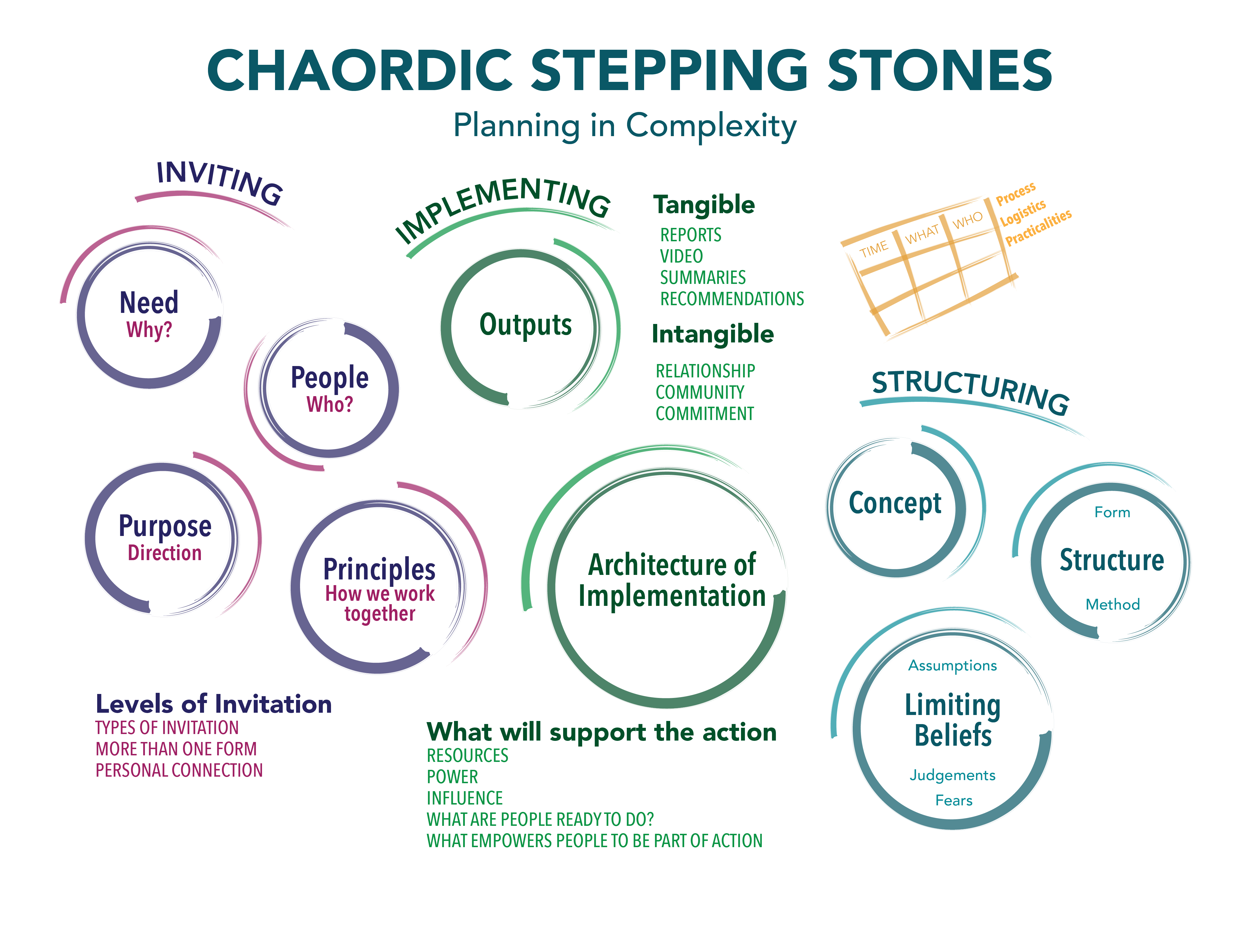
This morning, I’m reading this article. It’s a review of two books charting the changes in fishing practices in the north eastern Pacific over the last century. I’ve been witness to some of these changes, directly involved as I’ve watch abundant fish stocks in British Columbia become concentrated in the hands of a few corporate owners, with most of the economic activity associated with those fish moving off shore. Fishing communities in British Columbia are a mere shadow of their former selves, our coastal waterways (and wild salmon migration routes) are dotted with farms that grow invasive Atlantic salmon using …

A few years ago, Juanita Brown shared a very powerful image with me. She talked about how those of us that practice dialogue and facilitation in a deep way have access to various gateways that take us into a “central garden.” All of our pathways invite us into this garden where we come to discover and realize something about the role of dialogue, meaning making and collaboration. It is a set of realizations that lies beneath the practice of methods. On a call today with my friend Mark McKergow, we were discussing this image There are a bunch of us …

Today a client emailed me with a small anxiety about setting up a meeting room in a circle. The work we will do together is about rethinking relationships in a social movement and the concern was that it was already unfamiliar enough territory to work with. Setting up the room in a circle might cause people to “lose their minds.” I get this anxiety, because that is indeed the nature of doing a new thing. But I replied with this email, because I’m also trying to support leadership with my client who is doing a brave thing in her calling:

Over many years I have been using the chaordic stepping stones as the basis for all work I do with clients. This is a tool that I first heard of in the Art of Hosting community in about 2004. It was originally based on the chaordic lenses that Dee Hock developed to design organizations that took advantage of both order and chaos. It has been useful and rich and created all kinds of outcomes that would not have been possible other wise.
In the complex space, Paul Hobcraft shares some very good guiding principles, but the whole post shimmers with good advice about transformation, and is applicable to movement building, network organizing and enterprise. Today corporate transformations must be designed and executed quickly and routinely—not as once-a-decade events. Management teams are looking for best practices that increase speed and reduce the risk of pursuing business model innovation and change. That’s where minimum viable transformation comes into play. Before diving in, management teams should consider these five principles: 1. Learn how to learn. The central goal of minimum viable transformation is to learn …

